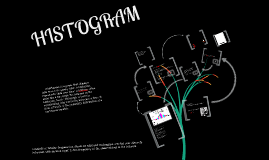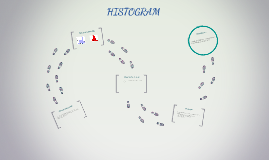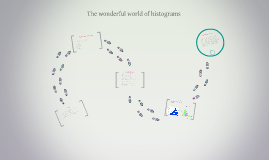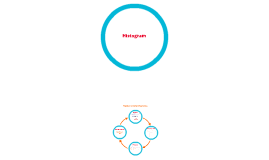Histogram
Transcript: HISTOGRAM A histogram is a graph, that displays data from a frequency table. A histogram represents "data over time". A historgr often looks like a bar graph, the columns on the histogram touch ; this graph is best for representing data marked by intervals of time. It is an estimate of the probability distribution of a continuous variable. consists of tabular frequencies, shown as adjacent rectangles, erected over discrete intervals, with an area equal to the frequency of the observations in the interval 1-Title describes the information that is contained in the Histogram 2- Horizontal/ X-axis shows you the scale of values into which the measurements fit. Generally grouped into intervals to help you summarize large data sets. 3-Bars has 2 important characters- Height and Width. the Height represents the number of times the values occurred. The Width represents the length of the interval covered by the bar 4-Vertical/ Y-axis shows you the number of times the values in an interval occurred. 5-Legend provides additional information that documents where the data came from and how the measurements were gathered Thank You for listening attentively :D Blake Kucinski Jake Tecco Hanna Reljin Austin Pettay Ella Foutz a.Count the total number of data points b.Summarize your data on a tally sheet -Identify all different values found in the View graph, organize these values from smallest to largest. -Then make a tally mark next to the value every time that value is present in the data set. -Alternatively, simply count the number of times each value is present in the data set and enter that number next to the value. c.Compute the range = Largest Value- Smallest Value d.Determine the number of intervals e.Compute the interval width f.Determine the Interval Starting Points -Use the smallest data point in your measurements as the starting point of the first interval. The starting point for the second interval is the sum of the smallest data point and the interval width. g.Count number of points in each interval h.Plot the data i.Add title and Legend Relative-uses the same information as a frequency histogram but compares each class interval to the total number of items. Cumulative-counts the cumulative number of observations in all of the bins up to the specified bins History of Histogram PREPARED BY : Karl Pearson He was the first person to present a Histogram Said to be derived from the Greek words “histos” (anything set upright) and “gramma” (drawing, record, writing). How to make conclusions with histograms (¤) 27 March 1857 in London, England (y) 27 April 1936 in Coldharbour, Surrey, England "The Father of the Science Statistics" Relative Frequency and Cumulative Histogram When dealing with large set of measurements presented in a table, you can use a Histogram to organize and display the data. A Histogram will make it easy to see where the majority of values fall in a measurement scale, and how much variation there is. To summarize large data graphically. Compare measurements to specifications Dates of Birth and Death When should we use Histogram? How to constuct a Histogram

















